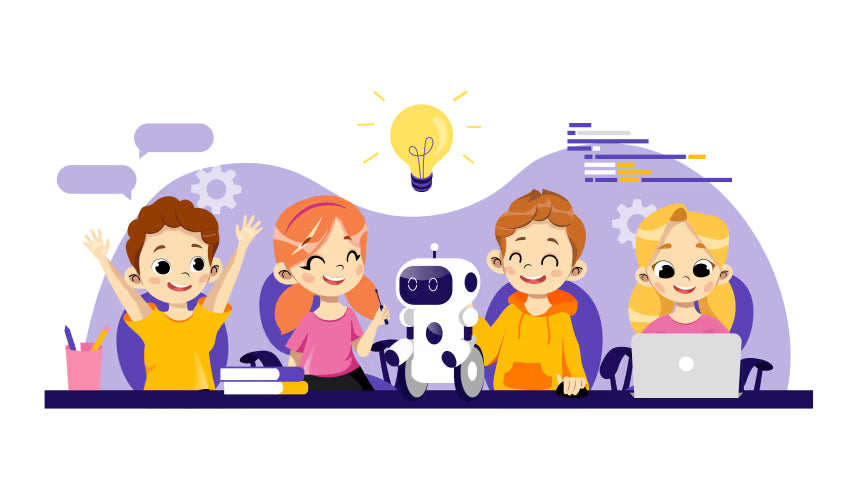
Don't Buy a Coding App: 5 Screen-Free Ways to Teach Your Child Coding Logic Today
Share
Coding Without Screens? Yes, It’s Possible
We’ve all heard it , “Coding is the new literacy.”
But as parents, the idea of giving our kids more screen time can feel… exhausting. Between YouTube, games, and digital classes, how much is too much?
Here’s the good news: real coding doesn’t start with a screen.
It starts with thinking—logical, structured, creative thinking. The kind your child can develop right in your living room, no tablet required.
In fact, the best way to introduce coding to young minds is through play. Fun, everyday activities can teach the very same concepts that form the foundation of programming—without a single app.
What Is “Computational Thinking”? (In Simple Words)
Computational thinking is just a fancy term for “thinking like a coder.” It helps children learn how to break down problems, recognize patterns, and make logical decisions.
Let’s simplify it:
-
Sequencing: Doing things in the right order (first, then, next).
-
Loops: Repeating a pattern or step multiple times.
-
Conditional Logic: “If this happens, then do that.”
-
Debugging: Finding and fixing mistakes.
Once kids understand these ideas, they’re already “coding” just without a screen.
5 Fun, Screen-Free Activities That Teach Coding Logic
1. The “Robot Helper” Game (Sequencing)
Turn yourself into a robot!
Ask your child to “program” you by giving step-by-step instructions to reach a toy.
For example:
➡️ “Go forward three steps.”
➡️ “Turn left.”
➡️ “Pick up the teddy bear.”
If they miss a step, the “program” fails—just like real code. This builds clear, logical thinking and sequencing skills.
2. The “If/Then” Clean-Up Game (Conditional Logic)
Make cleaning fun!
Tell your child:
-
“If you put away a red block, then you get one point.”
-
“If you put away a blue block, then you get two points.”
Soon they’ll understand that different conditions create different outcomes—exactly how computers make decisions.
3. Pattern Bracelets (Loops)
Grab some beads, cereal loops, or buttons.
Help your child create a bracelet using a repeating pattern—like red, blue, red, blue.
Then ask, “What happens if we loop it again?”
This simple craft visually teaches repetition—the foundation of loops in coding.
4. Map the Living Room (Debugging)
Draw a quick map of your living room. Mark the sofa, chairs, and door.
Now ask your child to guide a toy “robot” from the sofa to the door using arrows.
If they crash into a chair, they need to “debug” their path—fixing mistakes step by step, just like real programmers.
5. The Printable “Coder Pack” (Playloom Activity)
Want to take it further?
Download our Playloom “Think Like a Coder” Printable Pack — filled with logic puzzles, sequencing cards, and problem-solving worksheets for ages 4–7.
Each activity transforms coding principles into playful, screen-free fun.
You’ll love watching your child light up as they master big ideas through little games.
Raising Problem Solvers, Not Programmers
You’re not trying to turn your 5-year-old into a Silicon Valley coder.
You’re helping them learn how to think — step-by-step, logically, and creatively.
These early lessons in coding logic become the foundation for every skill they’ll need in the future—math, writing, problem-solving, and resilience.
So, skip the flashy app.
Pick up a few beads, markers, or printables.
And watch your little one think like a coder—no screens required.
